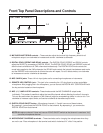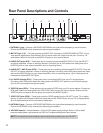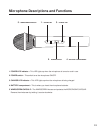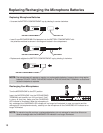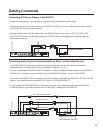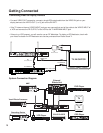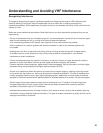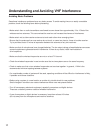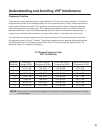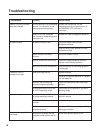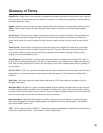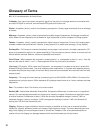
18
Understanding and Avoiding VHF Interference
Frequency Conflicts
There are two primary ways that other wireless systems and TV channels cause interference. The first is a
direct frequency conflict. If two wireless systems are on the same frequency, usually neither system will be
usable unless the other is turned off. This problem is more common than might be expected, especially
when all the equipment is the same type. This is because most systems have only a limited number of
standard frequencies. It should be remembered that the other systems could be some distance away - in
another house of worship down the street, in another nearby studio, or at another club in the vicinity.
TV transmitters can also be a powerful source of direct interference if the wireless frequency falls within
the assigned channel of a local TV station. This problem sometimes occurs because wireless frequencies
are listed in MHz and it is not always obvious within which TV channel a particular frequency falls. For
reference, below is TV frequency information.
TV Channel Frequency Data
VHF TV Channels
Channel
Number
Frequency
Range (MHz)
Picture Carrier
Frequency (MHz)
Color Sub carrier
Frequency (MHz)
Sound Sub carrier
Frequency (MHz)
7 174-180 175.250 178.8295 179.750
8 180-186 181.250 184.8295 185.750
9 186-192 187.250 190.8295 191.750
10 192-198 193.250 196.8295 197.750
11 198-204 199.250 202.8295 203.750
12 204-210 205.250 208.8295 209.750
13 210-216 211.250 214.8295 215.750
NOTE: The low VHF TV channels (2 through 6) are not used for wireless microphones and do not need to be considered
NOTE: The low VHF TV channels (2 through 6) are not used for wireless microphones and do not need
to be considered




